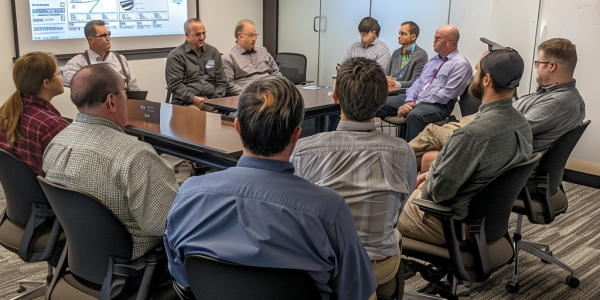NASA’s Artemis I Mission Reveals Unexpected Heat Shield Issue
NASA’s Artemis I mission encountered an unexpected issue with the Orion spacecraft’s heat shield during reentry, as more charred material than predicted detached unevenly. While the anomaly did not impact the safe splashdown, NASA is investigating the root cause. The upcoming Artemis II mission has been delayed to address heat shield concerns, with engineers conducting tests to understand the irregular charring observed in Artemis I.
NASA’s Spirit Rover’s Controversial Drawing on Mars
Discover the unexpected and humorous moment when NASA’s Spirit rover drew a controversial image on the surface of Mars back in 2004. Despite the light-hearted nature of the incident, these rovers have provided invaluable data that has enhanced our understanding of Mars and paved the way for future manned missions to the Red Planet.
Boeing Announces Workforce Reductions for SLS Program Due to ‘External Factors’
Boeing announces significant workforce reductions for its Space Launch System (SLS) program due to ‘external factors,’ affecting over 1,000 employees. The delays in NASA’s Artemis lunar missions are cited as a key factor. Despite criticism for project delays, Boeing transitions to production phase after successful uncrewed mission in 2022. Layoffs could impact employees across rocket facilities in Alabama, Louisiana, and Florida as company shifts focus to operational readiness for future lunar missions.
NASA Satellite Images Reveal Temporary ‘Ghost Lake’ in Death Valley National Park
Discover the astonishing size of a temporary lake in Death Valley National Park, known as the driest place in North America, formed by Hurricane Hilary and intense winter storms. Explore the transformation of Badwater Basin into ‘Lake Manly’ and the surreal sight it created for park rangers and visitors. Witness the evolution of the ghost lake captured by NASA satellite images, highlighting the dynamic and unpredictable nature of natural landscapes.
NASA’s Curiosity Rover Uncovers Mystery of Methane on Mars
NASA’s Curiosity rover has detected mysterious methane behavior on Mars, with levels spiking unexpectedly at night and fluctuating seasonally. Researchers propose that methane is trapped beneath a solidified salt crust, escaping when temperatures rise or the crust is cracked. Experiments using simulated Martian regolith support this theory. While the origin of Martian methane remains unknown, understanding its behavior is crucial for unraveling the planet’s geological and potentially biological history.
Lego Unveils Stunning New Space Sets for 2024 Lineup
Lego unveils stunning new space sets including a buildable replica of the Milky Way and the Artemis Launch System. Available to Lego Insiders on May 15, these cosmic marvels come with a price tag of $200 and $260 respectively. Get ready to embark on a journey through the cosmos with these captivating Lego space sets!
Hubble Telescope Celebrates 34th Anniversary with Stunning Image of Little Dumbbell Nebula
Learn about the stunning snapshot of the Little Dumbbell Nebula captured by the NASA/ESA Hubble Space Telescope on its 34th anniversary. Discover the unique structure of this planetary nebula, the incredibly hot white dwarf star at its center, and the mesmerizing display of stellar wind created by its lobes hurtling through space at two million miles per hour. Despite its dazzling appearance, the Little Dumbbell Nebula is expected to disappear in approximately 15,000 years, highlighting the vast timescales present in the universe.
NASA Considers SpaceX’s Starship for Mars Sample Return Mission
NASA is considering utilizing SpaceX’s Starship spacecraft to retrieve samples from Mars, potentially revolutionizing the Mars Sample Return mission. Experts believe that leveraging advanced technology like Starship could enhance the efficiency of the mission and provide crucial insights into solar system evolution.
Tragedy Strikes: Helicopter Crash, Volcano Fall, and The Voice Star Shot
Tragedy strikes with 10 dead in helicopter crash, tourist dies after volcano fall, and The Voice star shot in chest. Car safety concerns arise with Isofix car seat recall. Updates on Kate Middleton and mourning for legendary athlete. Young scientist from Lurgan offered NASA opportunity. Lee Johnston’s journey to the stars and United Space School experience. Global recognition for Lee Johnston and FISE’s mission to inspire future leaders in space education.
Astronauts Capture Breathtaking View of Namibia’s Brandberg Massif from ISS
Astronauts aboard the International Space Station recently captured a breathtaking view of the Brandberg Massif, also known as the ‘Burning Mountain’ of granite, located in Namibia. This stunning photograph showcases the highest point in Namibia, standing at an impressive 2,573 meters above sea level. Learn about the cultural and geological significance of the Brandberg Massif, including the famous ‘White Lady’ rock painting and the diverse rock types in the Namib Desert. Explore the geological history dating back millions of years and the human impact on the region, making it a popular tourist destination for rock art and archaeological sites.










